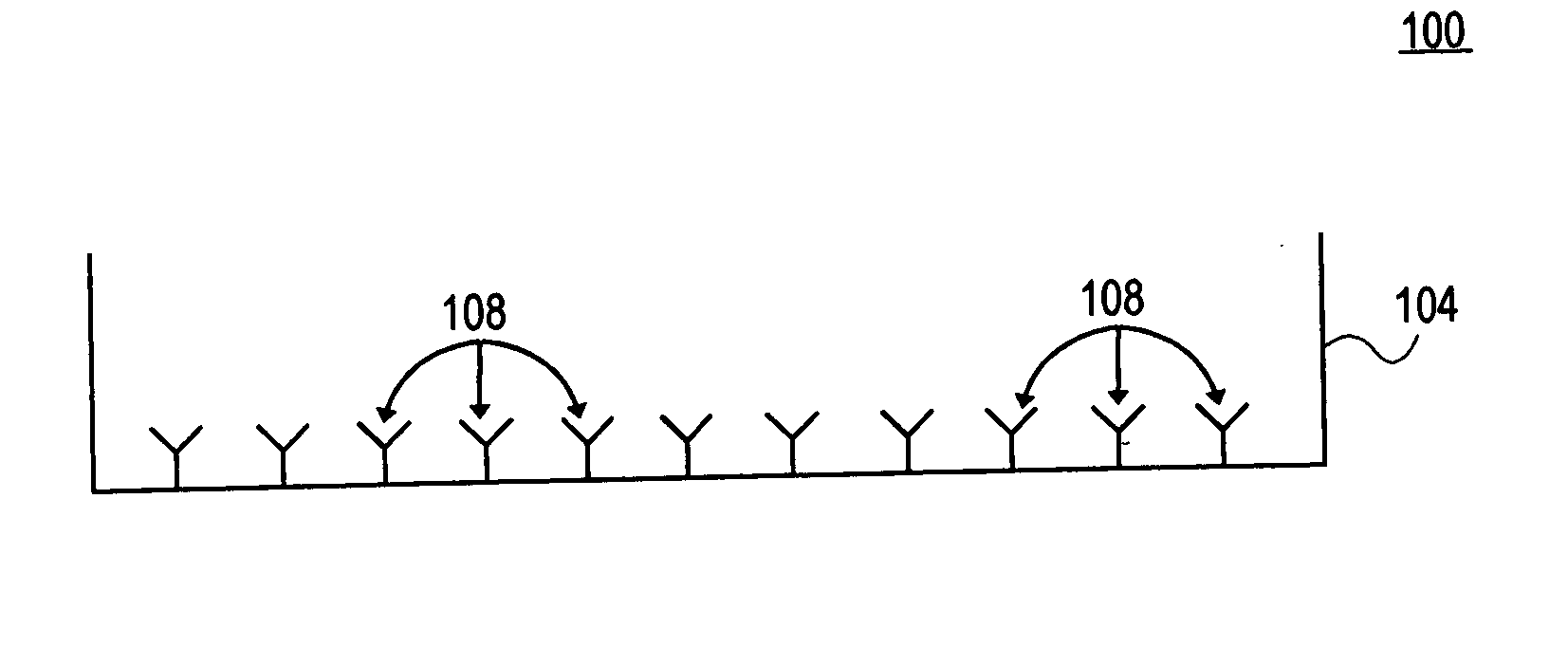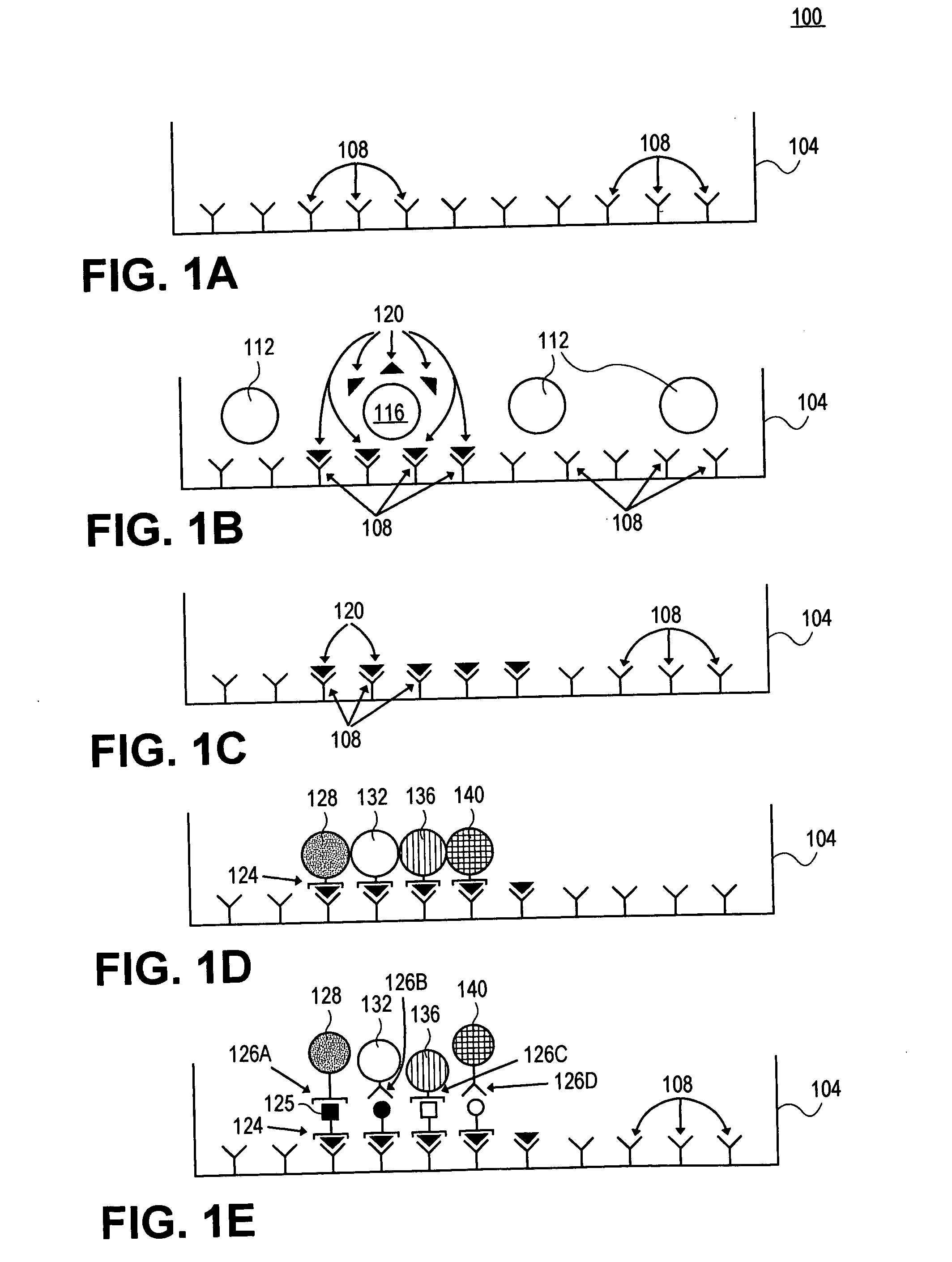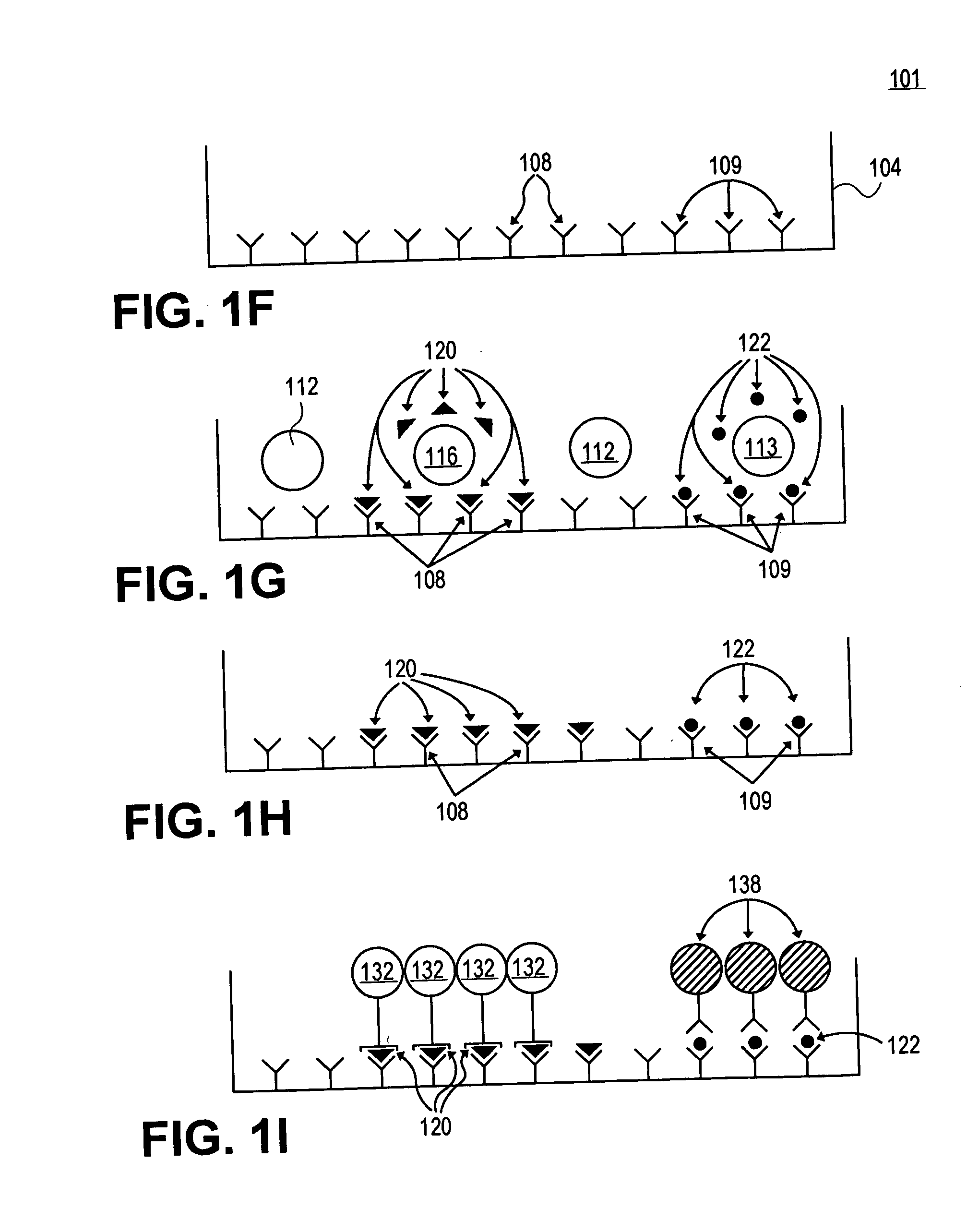Nanoparticle and microparticle based detection of cellular products
a technology of nanoparticles and cellular products, applied in the field of nanoparticles and microparticles based detection of cellular products, can solve the problems of inability to easily monitor the response of t-lymphocytes (“t-lymphocytes”) to antigens (including the antigen of pathogens), few sensitive, reliable and rapid techniques at present, and no reliable assay that can detect whether. , the effect of increasing the detection capability
- Summary
- Abstract
- Description
- Claims
- Application Information
AI Technical Summary
Benefits of technology
Problems solved by technology
Method used
Image
Examples
example 1
Use of Detection Surfaces in Detection Particle Based Assay
[0073] In this example, a detection surface is in a microtiter plate to detect cellular products. First, the detection surface is coated with anti-interferon gamma (IFN gamma antibody 1) as the capture reagent. After several hours of incubation (2 hrs to overnight), during which the capture reagent(s) bind(s) to the membrane, excess reagent is washed away. The unsaturated surfaces of the membrane are then blocked with irrelevant protein (bovine serum albumin or gelatin) to prevent subsequent nonspecific binding of proteins. Following the blocking step, the plates are washed to remove non-plate bound, excess blocking reagent.
[0074] At this point the detection substrate is properly prepared to test cells. In this case, human peripheral blood mononuclear lymphocytes (PBL) are added at a concentration of about 5×105 per well. Specific antigen (e.g. HIV antigen) is added to the experimental wells, control wells contain no antig...
example 2
Peptide Screening
[0077] In this example, microwells are employed to screen and identify the antigenic determinants (i.e. MHC-bound peptides of the antigen generated by intracellular processing) that T cells recognize, using peptides. Usually, in studies that involved peptides, a few randomly chosen sequences of the antigen are tested as peptides. However, even overlapping sequences that walk down the molecule in steps of 5 to 10 amino acids do not necessarily detect all determinants. By contrast, in this example overlapping sets of peptides are employed that walk the molecule amino acid by amino acid. This peptide scan includes every possible determinant on an antigen and provides an exact mapping of the T cell repertoire.
[0078] While an assay system has been employed to test for antigen specific CD4 cells [G. Gammon et al., “T Cell Determinant Structure: Cores and Determinnant Envelopes in Three Mouse Major Histocompatibility Complex Haplotypes” J. Exp. Med. 173: 609-617 (1991)],...
example 3
Two Color Detection Particle Based Assay
[0084] In this example, a capture surface is prepared as in Example 1, except that a second capture reagent and a second detection reagent / microsphere is used as well. To prepare the surface for a two-color assay, two (2) capture reagents (anti-IFNγ and anti-IL-5 antibody) are used simultaneously (for additional capabilities, still additional capture reagents can be employed for a “multicolor” assay).
[0085] Cells are again plated (about 5×105 cells) and only the antigen specific T cells are stimulated by the antigen to release secretory products. However, in this case, the surface is capable of detecting both IFNγ and IL-5. After the culture period and washing described in Example 1, a second detection reagent attached to a second detection particle is employed together with the first detection reagent attached to a first detection particle. In this case, detection particles labeled with anti-IL-5 is added (alternatively, fluorochromes emitt...
PUM
| Property | Measurement | Unit |
|---|---|---|
| contact angles | aaaaa | aaaaa |
| contact angles | aaaaa | aaaaa |
| concentration | aaaaa | aaaaa |
Abstract
Description
Claims
Application Information
 Login to View More
Login to View More - R&D
- Intellectual Property
- Life Sciences
- Materials
- Tech Scout
- Unparalleled Data Quality
- Higher Quality Content
- 60% Fewer Hallucinations
Browse by: Latest US Patents, China's latest patents, Technical Efficacy Thesaurus, Application Domain, Technology Topic, Popular Technical Reports.
© 2025 PatSnap. All rights reserved.Legal|Privacy policy|Modern Slavery Act Transparency Statement|Sitemap|About US| Contact US: help@patsnap.com



